Nike Vaporfly NEXT% Review – much hyped but do they work (and what would I know)?
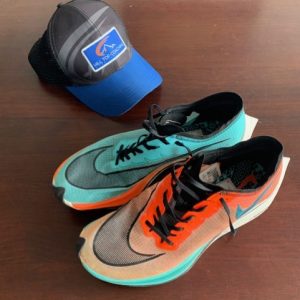
Background of the shoes
Eliud Kipchoge’s attempts at a sub-2 hour marathon as part of the Breaking 2 Project (and success in 2019 at his second try with a blistering 1:59:40) understandably received worldwide publicity. The Nike shoes that were developed for this project have gained a huge amount of coverage too, from the earlier Vaporfly Elite (used by Kipchoge in his first attempt in 2017) and Vaporfly 4%, the improved (and marketed as even faster) Vaporfly NEXT% and now the Alphafly NEXT%, the shoe Kipchoge broke the 2 hour barrier in.
Becoming ‘Vaporfly-aware’
Throwback to October 2018 when I had noticed these weird Nike shoes, bright orange with massive foam cushioning being worn by a few age group athletes competing in the Ironman World Championships in Kona Hawaii that year (I’m guessing they were the Vaporfly 4% given the date). It was in 2019 that the hype was building in earnest about these shoes, with some grand claims about massive performance improvements to be gained by those that could afford them. I’d learned by then that it wasn’t just the thick sole cushioning that made the Nikes fast, after all, Hoka One One had introduced this feature years earlier in their shoes without world records tumbling. It appeared that the innovation was from the combination of the cushioning and a midsole carbon fibre plate that provided stiffening and support to the very softly cushioned sole.
The hype is building
A year later in Kona for the 2019 Ironman World Championships, my pre-race guess was that the Nike Vaporflys would be worn by hundreds of the 2000+ competitors in the race – and I was proved correct! So, what was going on? Was the hype real? After 25 years immersed in the sport of triathlon, I am naturally suspicious of the ‘latest game-changer’ in the sport. For every innovation that provides real benefits (e.g. aerobars, aero helmets, deep wheels) there are innovations that may only work for some people or require patience in getting strong enough to be able to see the benefits (minimalist shoes and barefoot run training is a good example). Then there are the things that just don’t work and quickly disappear once the initial buzz dies down.
Time to ask questions
After Kona I reached out to everyone in triathlon that I knew who owned a pair of the Nike Vaporflys, from professional triathletes to elite age group competitors (the cost seemed to limit those that purchased the shoes) and asked them if the hype WAS real? Were they faster running in them than any shoes previously? Were there other benefits or draw backs of the shoes (beyond price)? The responses were generally guarded and a bit mixed, but most believed that the shoes gave them some level of improvement. So, there was only one thing to do (no, not rush out and spend AUD$320, but find someone with a pair in my size that I could borrow!)
The (unscientific) test
Thanks to the generosity of my mate John D’Amore (Australia’s wealthiest greengrocer) I had his pair of size 11 Vaporfly NEXT% strapped to my feet and ready for a test on the local athletics track. My aim was to do one of my standard track interval sessions (consisting of 4 x 1km efforts at best pace with 500m jog between each) then compare times with my last similar session while also assessing some subjective factors such as how the shoes felt and how my legs felt afterwards. Unscientific hence the last part of this post is pretty short!
Objective results:
Nike Vaporfly NEXT% (3/3/20) Newton Distance Elite (18/2/20)
Interval 1 – 3:57 Interval 1 – 4:06
Interval 2 – 3:40 Interval 2 – 4:13
Interval 3 – 3:42 Interval 3* – 3:54
Interval 4 – 3:36
*only 3 intervals done as I was racing on the following Sunday
Note that the March test was following Ironman 70.3 Geelong triathlon on 23 February, soon after the comparison session. My fitness felt better for the test so we can’t read too much into the results, although the 3:36 final interval was my fastest for many years.
Subjective results:
The Nike Vaporflys are so different from any shoe I’ve run in before. I had previously been supported by Newton Running since 2010 and the Newtons are on the minimalist side of things. The Vaporflys are NOT minimalist, with the substantial cushioning in the sole adding a lot of height to the ride and the stiffness of the carbon plate they have a very unnatural and almost unstable feeling to them. The Vaporflys feel fast and seem to be fast however. I also noticed in the hours after the run and then the next day that my legs felt less sore and less fatigued than I would expect after a fast interval session on the track. This may be a real positive if it allows more frequent training with less recovery time, as well as potentially helping in the back half of an Ironman marathon when soreness and fatigue of the running muscles often becomes a speed limiter.
Wrap up
So that’s my initial review: I have nothing more to add until I actually buy a pair and test them in the crucible that is an Ironman marathon (or maybe a half ironman to start with!). I saw enough in the Vaporflys to convince me that they are certainly worth investigating further.
Stay tuned for another blog post (likely much shorter!) reviewing a similar albeit more training-focused shoe, the Nike Zoom Fly 3. A pair of shoes I actually went out and paid for and have been training in for the last few months so I’ll be able to provide more of a long-term assessment.
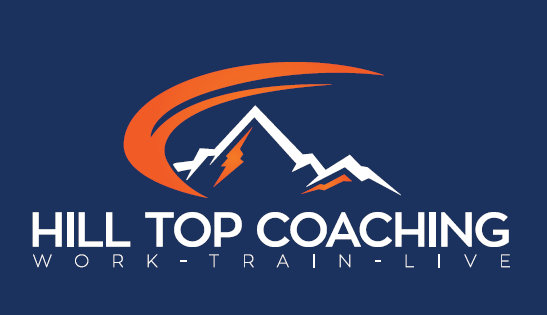
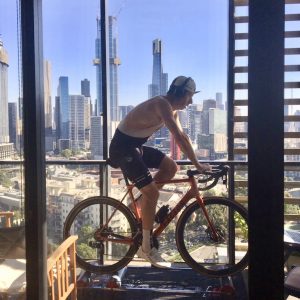 I had a great idea to celebrate Nicky’s birthday in March: let’s go to the covid-19 epicentre of NYC! Of course, I didn’t know at the time of booking that there would be a pandemic and even when we took the flight from Melbourne to New York on 5 March, the Corona Virus was still something that was only impacting a few locations around the world.
I had a great idea to celebrate Nicky’s birthday in March: let’s go to the covid-19 epicentre of NYC! Of course, I didn’t know at the time of booking that there would be a pandemic and even when we took the flight from Melbourne to New York on 5 March, the Corona Virus was still something that was only impacting a few locations around the world.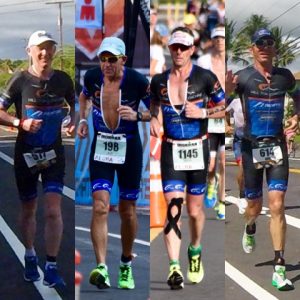 I ticked off Ironman World Championship finish number 12 on October 13th 2018 at Kailua-Kona on the Big Island of Hawaii and again challenged my body and mind by taking on what I consider to be the toughest triathlon course I have raced on.
I ticked off Ironman World Championship finish number 12 on October 13th 2018 at Kailua-Kona on the Big Island of Hawaii and again challenged my body and mind by taking on what I consider to be the toughest triathlon course I have raced on.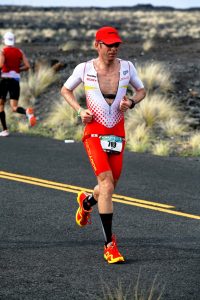 12th October 2013 was a great day for me.
12th October 2013 was a great day for me.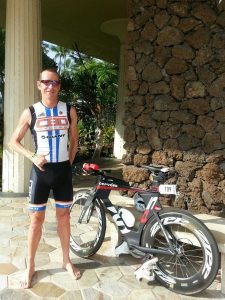 My first Ironman in Kona was back in the day and my bike reflected that – an alloy Cervelo P3 (The Silver Bullet). I still miss that bike.
My first Ironman in Kona was back in the day and my bike reflected that – an alloy Cervelo P3 (The Silver Bullet). I still miss that bike.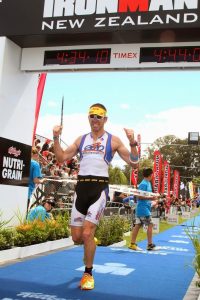
 I’ve written a few race reports over the years (ok, a lot) and the hardest to write has always been the Hawaii Ironman report. Many, many words have been put to paper by many, many authors, describing in detail every nuance of the place, the race, the history and all the clichés that seem to be mandatory in any story regarding Kona in October.
I’ve written a few race reports over the years (ok, a lot) and the hardest to write has always been the Hawaii Ironman report. Many, many words have been put to paper by many, many authors, describing in detail every nuance of the place, the race, the history and all the clichés that seem to be mandatory in any story regarding Kona in October. Thought I’d let you know how things went up at Port Mac. It was my 10th finish of arguably Australia’s most prestigious triathlon, making things nice and even with 5 each of the old Forster course and now 5 in Port Macquarie (not mentioning the infamous 2006 race at Port and that speed hump that was determined to take me out of the game early).
Thought I’d let you know how things went up at Port Mac. It was my 10th finish of arguably Australia’s most prestigious triathlon, making things nice and even with 5 each of the old Forster course and now 5 in Port Macquarie (not mentioning the infamous 2006 race at Port and that speed hump that was determined to take me out of the game early).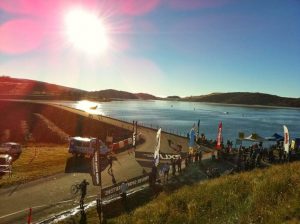
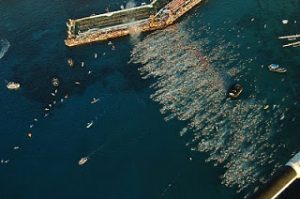 I’ll remember the 2010 Ironman World Championship in Hawaii for the harsh winter in Melbourne, Australia preparing for the race as much as the race itself. Against all odds, this was my fourth go at Ironman Hawaii in four years and another chance to nail a race on the most iconic of courses in triathlon.
I’ll remember the 2010 Ironman World Championship in Hawaii for the harsh winter in Melbourne, Australia preparing for the race as much as the race itself. Against all odds, this was my fourth go at Ironman Hawaii in four years and another chance to nail a race on the most iconic of courses in triathlon.